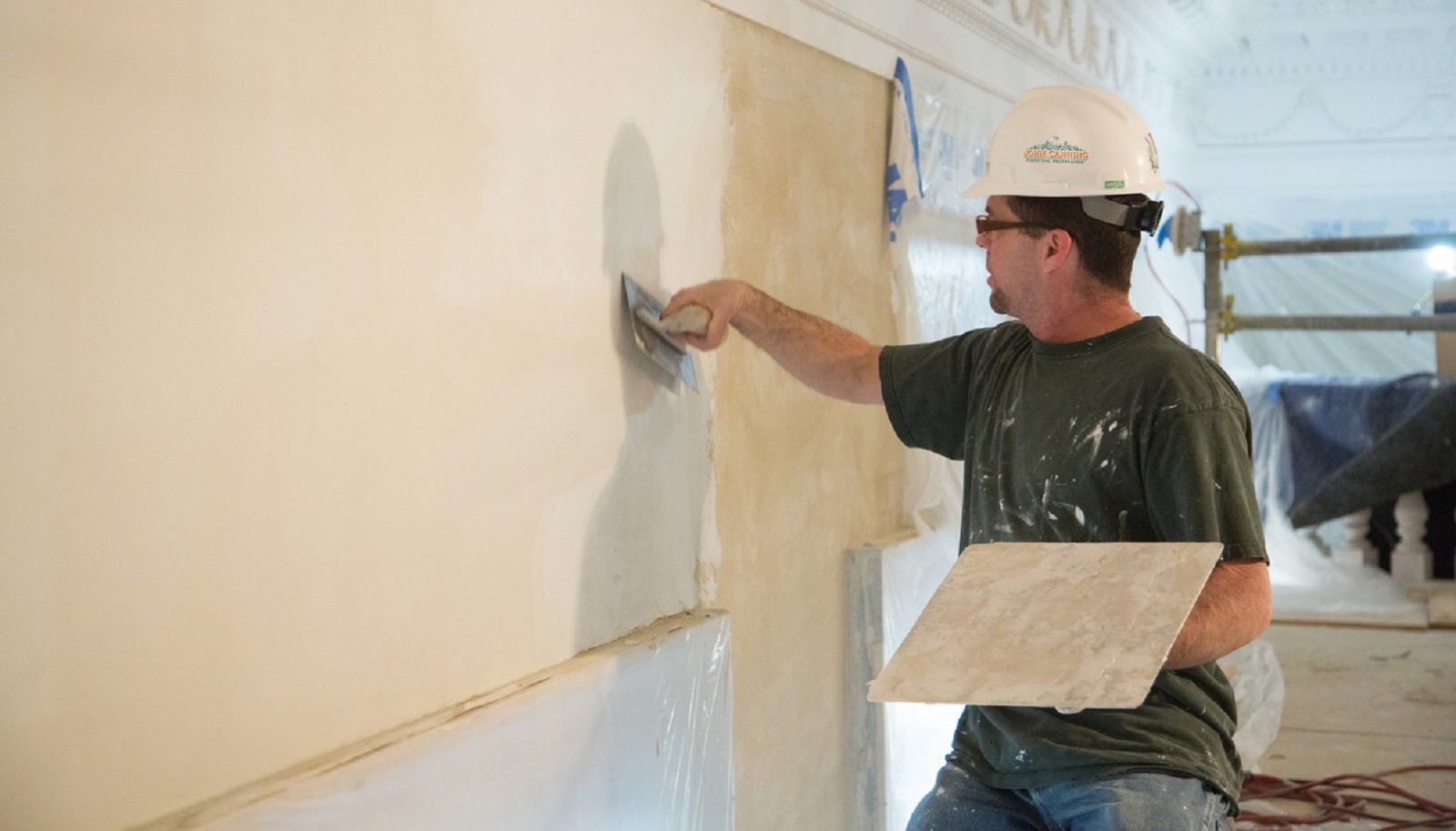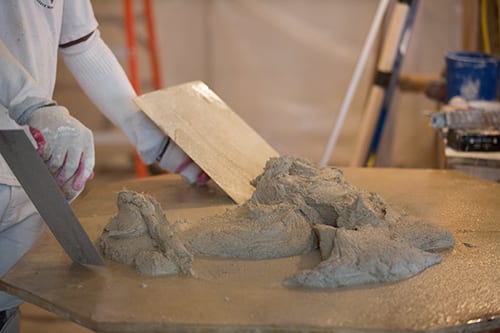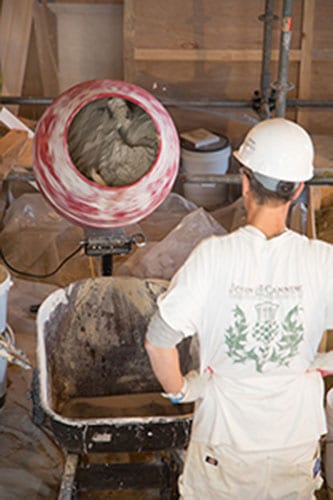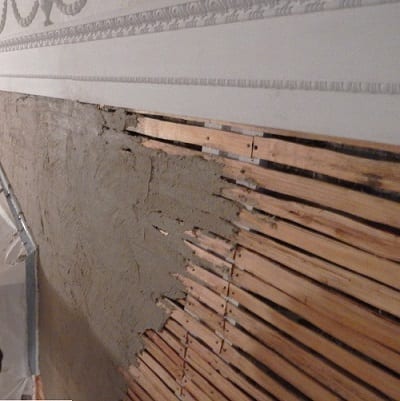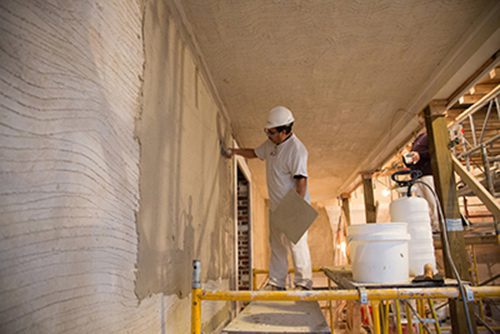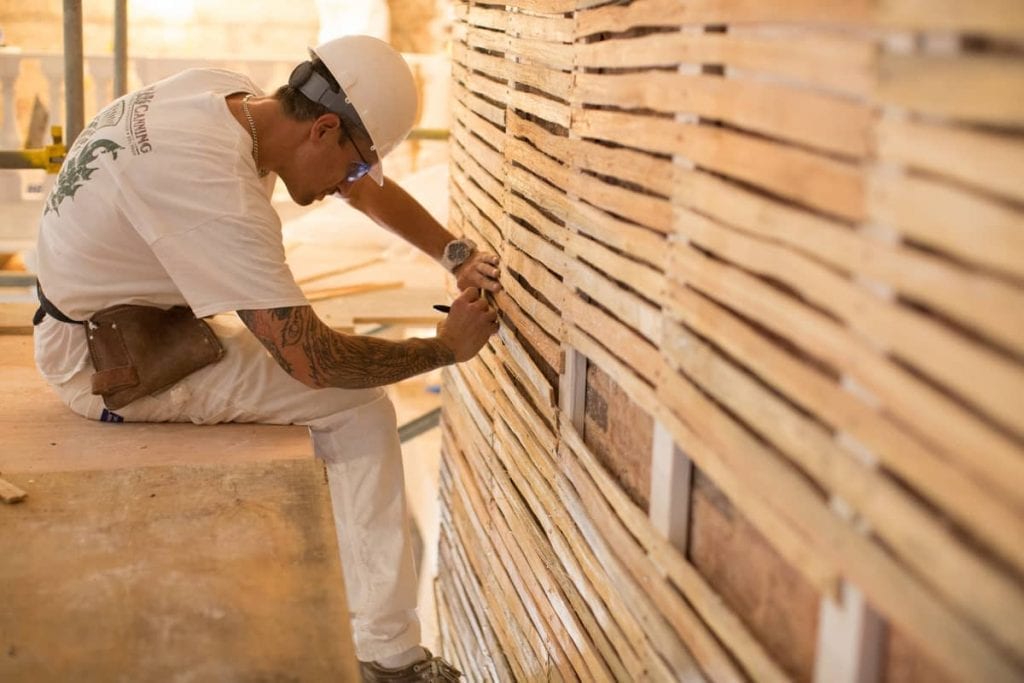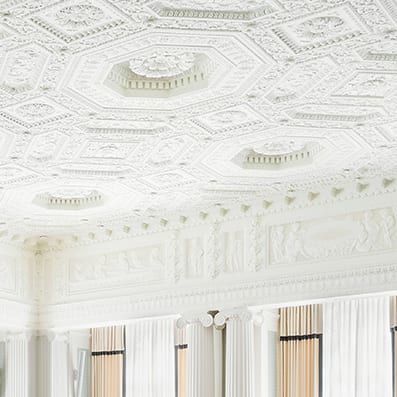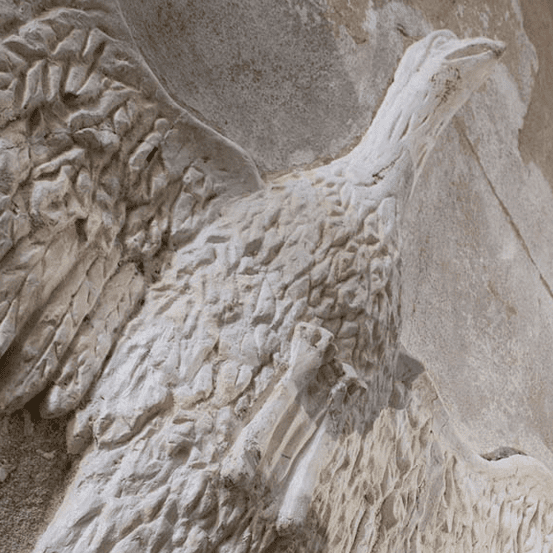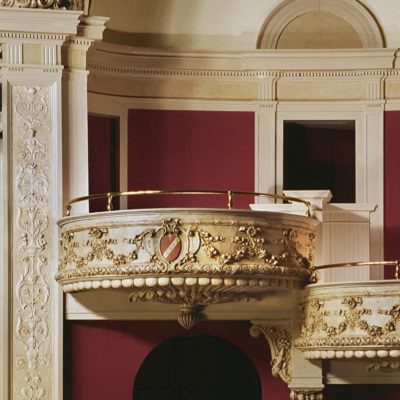A prevalent building technique up until the turn of the century/post war era, lath and plaster was the most common type of plaster application used in both residential and commercial spaces. Though it is no longer utilized today, many individuals choose to preserve horsehair plaster as a means of maintaining historical accuracy.
Animal Hair Plaster Mixture
Horsehair plaster is a relatively simple mixture and application process. The plaster is composed of three elements; lime, aggregate, water and animal hair, which is mixed together shortly before applying to the lath. Lime plaster differs from modern Gypsum plaster in that it cures rather than sets, which means that the plaster absorbs atmospheric carbon and carbonates, modern Gypsum in simple terms sets chemically. This difference presents itself in time and tending, lime-based plaster requiring more cure time and tending time.
Plaster Mixer Process
The application of the plaster requires three layers (scratch coat, brown coat, and finish coat) applied to wood lath, the spacing of the lath is usually 3/8” to ½” apart, smaller or bigger spacing prevents the proper formation of the plaster ‘nibs or keys’. Once all three coats have been applied the plaster can range from three-quarters to seven-eighths thick, making it one of the thickest plaster applications. Overall, the tending process was time consuming and potentially expensive, depending on the total space that needed to be covered. The brown coat would usually be ‘floated’ back to compress the material, to prevent the plaster shrinking back and cracking through the finish coat. And depending on environmental conditions the lime plaster coats have to be kept damp while the curing is taking place.
Scratch Coat
The purpose of the horsehair itself was to act as a bridging agent, controlling the ‘shrinkage’ of the plaster and helping to hold the plaster ‘nibs’ together, the ‘nibs’ being crucial to the performance and longevity of the plaster. It was not uncommon for other animal hair to be used in plaster mixtures, but the long hair found on the tail of horses make for the perfect plaster mixture. The plaster mix could be applied to both walls and ceilings and in spite of its time-consuming application process, the plaster cured faster than other commonly used mixtures (Earth Daub, Adobe) making it more versatile. This traditional type of plaster fell out of grace during the post war construction boom, when there was a need for quick housing replacement and a severe lack of artisan tradesmen. Gypsum plaster is quicker and needs less skill. However, there are some drawbacks with replacing Lime-Hair plaster in Historic buildings with modern gypsum, including breathability issues, compatibility issues, acoustical differences and durability. Lime hair plaster is extremely durable- examples of Egyptian and Roman installations can be seen on many buildings Europe and North Africa. Because of the nature of the material, it can withstand long exposure to water ingress, extreme weather conditions and is more flexible than gypsum-based materials.
Scratch and Brown Coat
Other important things to note about Lime-hair plaster that might come up during renovations to a historic space:
Removing wallpaper/fabric from walls
When it comes time to remove the paper, steaming is the only appropriate method. Scoring the walls will result in potentially catastrophic damage to the plaster underneath, and may cause it to crumble entirely. Similarly, application of harsh solvents or fabric softener may dissolve or strip off layers of plaster. If you think you may have horse hair plaster and are looking to complete this sort of project, it is time to call a professional.
Insulation/lack thereof
Though insulation is not only common, but also essential today many historic spaces lack proper insulations between inner and outer layers. When budgeting for a project that involves opening walls and removing historic plaster applications, it is important to budget both time and money to applying an appropriate layer of insulation. It is also not uncommon to find the cavity between the inner and outer layer to be stuffed with trash, hay, or other materials as a means of primitive insulation.
Horsehair has a long tradition throughout the United States and can be found in almost every prewar building. Helping preserve these walls maintains a bit of historical accuracy gypsum board cannot. Like most proper restorations, an expert will be needed to review the space and complete the work. Attempting to match the tri-layer plaster process without knowledge of proper techniques and thickness will result in further damage. We hope that you will choose to preserve what original plaster and detailing you can. If horsehair plaster needs to be preserved, repaired or restored it is best to have a professional who is experienced in historic plaster repairs and restoration to assist in the process. When dealing with historic interiors, whether it is plaster finishes, decorative painting, gilding, or the restoration and conservation of other material, it’s important to bring in the right architectural arts specialty contractors on to the team.
With over 45 years’ experience specializing in services for historic preservation, conservation, restoration, and replication, we understand the importance of sharing our expertise and knowledge in our field. If you enjoy our blogs, have a question, want to suggest a topic that you would like to see a blog on, or have a project to discuss, contact us.

